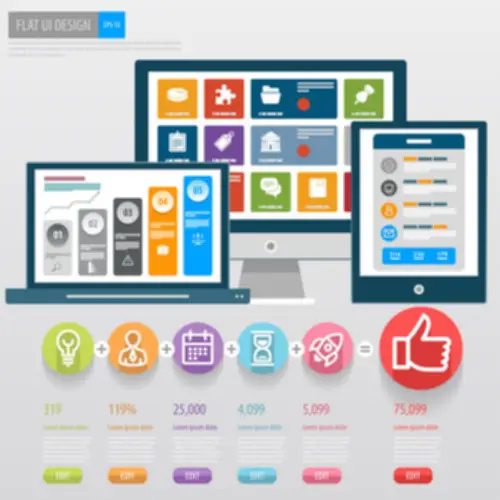Skills of team building are important for each supervisor what are the four stages of team development and leader. It is necessary for the team chief to take them via staff creation stages and transfer to productive stage. In the productive stage group members complement one another’s skills and efforts to attain common targets.
Icebreaker Questions For Team Building
In the Performing stage, the group makes significant progress towards its targets. Commitment to the team’s mission is high and the competence of staff members can also be excessive. Team members ought to continue to deepen their information and skills, including working to constantly improving staff improvement.
Unlocking The Subsequent Generation’s Leadership Potential: Strategies For Studying And Growth
LRI offers its shoppers with an unique Client Member Area, which accommodates tools used by LRI consultants to strengthen groups and organizations. These tools vary from PDF worksheets to video courses and supplemental training materials. Every group moves through the four stages of improvement, and may slip back a stage or two as new challenges or opportunities come up.
Stage 1: Forming (getting To Know Each Other)
- A “can do” perspective is seen as are provides to assist one another.
- LRI’s consultants have distinguished information in facilitating the event of high-performing teams.
- An Agile group is typically defined as a cross-functional group of people that have (more or less) every thing they want to ship a working, examined increment of product.
- Fellow is the one all-in-one AI meeting transcription and management software program for remote and hybrid organizations.
- Request and track real-time feedback on meetings, recent initiatives, and performance.
Simply put, with the flexibility to acknowledge your team’s present stage will let you better cater to your group and, if you are the staff chief, to make them the shared objectives. Rina, the chief of the Bug Banisher Team, comes to Mr. Marcus thirty days after the preliminary meeting. She has a laundry list of issues to debate, and none of them is pleasant. Nicole from advertising has scheduled focus group classes, however the final prototype of the Banisher is not going to be accomplished in time for the first session.

Subscribe To The Lri Publication For The Newest Tools
This occurs as a outcome of those who left take their strengths with them, and the “new group” must figure out who has the talents to fill within the gaps. These modifications can disrupt the group’s progress, and it is important to reintroduce the new staff members to the existing team and rebuild trust and rapport. Change is tough, however they’ll succeed with excellent management and a team of people with the grit to perform the mission.
The objective of this stage is to ascertain a high-performing team that’s able to attaining its targets. Bear in mind that, in some cases, you would possibly need to reform and relaunch a long-standing staff to reap the advantages of all four Tuckman stages. And to be clear, the Tuckman model is just one method of looking at group growth. But it’s been round a very long time and I believe it nonetheless serves as a good jumping-off level for the idea of seeing groups as organically evolving entities quite than “plug and play” machines.
This is when issues “get real.” Having found some level of comfort on the staff, some team members could begin to distrust others—whether because of interpersonal clashes, past experiences or different reasons. Resistance to assigned duties and bristling at sure rules or methods may happen. At this stage, members usually start to question the wisdom of the project at hand and even the aim of the team itself. Of course, this is just one model for team makeup; there are limitless methods to kind your Agile groups.

As a project progresses through totally different phases some group members will go away the project, others will be part of and a few will move into new positions inside the project. After the interior conflicts have been resolved, the group members begin to exhibit a way of cohesion and are extra comfortable with each other. They start sharing their concepts and giving suggestions to 1 one other, increasing the group’s total creativity. Now that the staff is previous the introductory stage, personalities can begin to battle as a result of differing opinions and approaches.
For workers of all ages, cross-functional mentorship additionally creates opportunities for professional progress that merely don’t exist in different organizations. Before diving in any deeper, let’s align around what an Agile team is – and what it wants. An Agile team is usually outlined as a cross-functional group of people that have (more or less) every thing they want to deliver a working, examined increment of product. ThoughtHub is a group of information that will assist you learn extra about your favorite matters.

Having a approach to determine and understand causes for adjustments within the staff behaviors can help the staff maximize its process and its productivity. After reading every thing above, you’ve a pretty good thought where your group is at – but does the relaxation of the staff agree? We all perceive issues in our own distinctive method primarily based on past expertise and what we know now. As a new project section starts new groups are shaped and the members will undergo the levels. New group members joining established groups will go through a really personal version of the stages as they settle in.
After all, their capability to overcome obstacles and achieve their targets is a reflection of a management job properly carried out. The norming stage is more harmonious since groups understand why it is important to ask for assist, and tips on how to come to you with questions once they want guidance. After the storming stage, they acknowledge behavioural patterns, strengths and develop foresight for upcoming roadblocks. You recognize that your staff is new, and need them to really feel supported, motivated and psychologically secure.
Different opinions are shared, and there could be a sense of competitors. This could be troublesome for the team, as disagreements can result in dissatisfaction and discontent. The chief should stay calm and open-minded to help the team move ahead. “With group norms and roles established, group members give consideration to achieving widespread goals, often reaching an unexpectedly excessive level of success.”[3] By this time, they’re motivated and knowledgeable.
Establishing group collaboration early on can help reduce the impact of—or even prevent—this stage of group growth. In fact, disagreement is crucial to effective group collaboration. So when conflicts do come up, it’s important to resolve them with efficient problem-solving as they come as an alternative of avoiding them. Having a staff with already existing collaborative expertise can help resolve conflicts more simply and sooner. Bruce Tuckman was a Professor Emeritus of Educational Psychology at Ohio State University. In the mid-1960s, he introduced his model of the 4 stages of staff improvement.

Transform Your Business With AI Software Development Solutions https://www.globalcloudteam.com/
